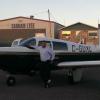Glide slope not coming in
-
Members Online
- Pinecone
- MikeOH
- IvanP
- C.J.
- DXB
- Justin Schmidt
- Tim-37419
- Shadrach
- rwiseman
- PeteMc
- Hank
- ArtVandelay
- Mooney in Oz
- Niko182
- John Mininger
- PT20J
- Himark
- mooneydemi
- Echo
- gevertex
- BlueSky247
- geoffb
- Schllc
- Boilermonkey
- Vance Harral
- hammdo
- Robert C.
- Danb
- hubcap
- Lois
- 201Mooniac
- Ragsf15e
- CAV Ice
- KSMooniac
- natdm
- Parker_Woodruff


Recommended Posts
Join the conversation
You can post now and register later. If you have an account, sign in now to post with your account.